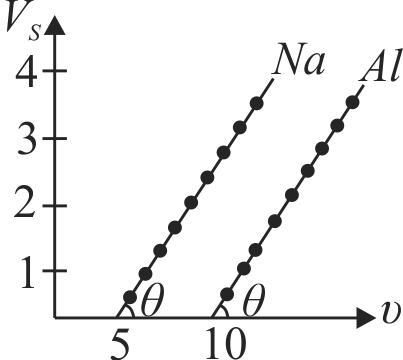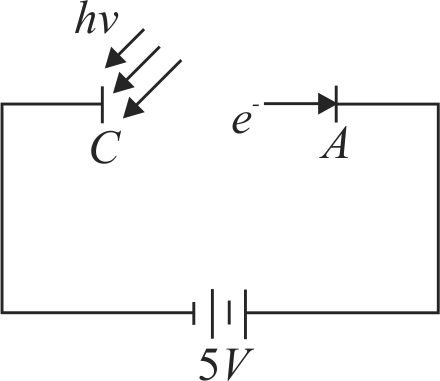357771 The work function of metals \(A\) and \(B\) are in the ratio of 1:2. If light of frequencies \(f\) and \(2 f\) are incident on the surfaces of \(A\) and \(B\) respectively, the ratio of the maximum kinetic energies of photoelectrons emitted is ( \(f\) is greater than threshold frequency of \(\mathrm{A}, 2 f\) is greater than threshold frequency of \(B\))
357771 The work function of metals \(A\) and \(B\) are in the ratio of 1:2. If light of frequencies \(f\) and \(2 f\) are incident on the surfaces of \(A\) and \(B\) respectively, the ratio of the maximum kinetic energies of photoelectrons emitted is ( \(f\) is greater than threshold frequency of \(\mathrm{A}, 2 f\) is greater than threshold frequency of \(B\))
357771 The work function of metals \(A\) and \(B\) are in the ratio of 1:2. If light of frequencies \(f\) and \(2 f\) are incident on the surfaces of \(A\) and \(B\) respectively, the ratio of the maximum kinetic energies of photoelectrons emitted is ( \(f\) is greater than threshold frequency of \(\mathrm{A}, 2 f\) is greater than threshold frequency of \(B\))
357771 The work function of metals \(A\) and \(B\) are in the ratio of 1:2. If light of frequencies \(f\) and \(2 f\) are incident on the surfaces of \(A\) and \(B\) respectively, the ratio of the maximum kinetic energies of photoelectrons emitted is ( \(f\) is greater than threshold frequency of \(\mathrm{A}, 2 f\) is greater than threshold frequency of \(B\))
357771 The work function of metals \(A\) and \(B\) are in the ratio of 1:2. If light of frequencies \(f\) and \(2 f\) are incident on the surfaces of \(A\) and \(B\) respectively, the ratio of the maximum kinetic energies of photoelectrons emitted is ( \(f\) is greater than threshold frequency of \(\mathrm{A}, 2 f\) is greater than threshold frequency of \(B\))

